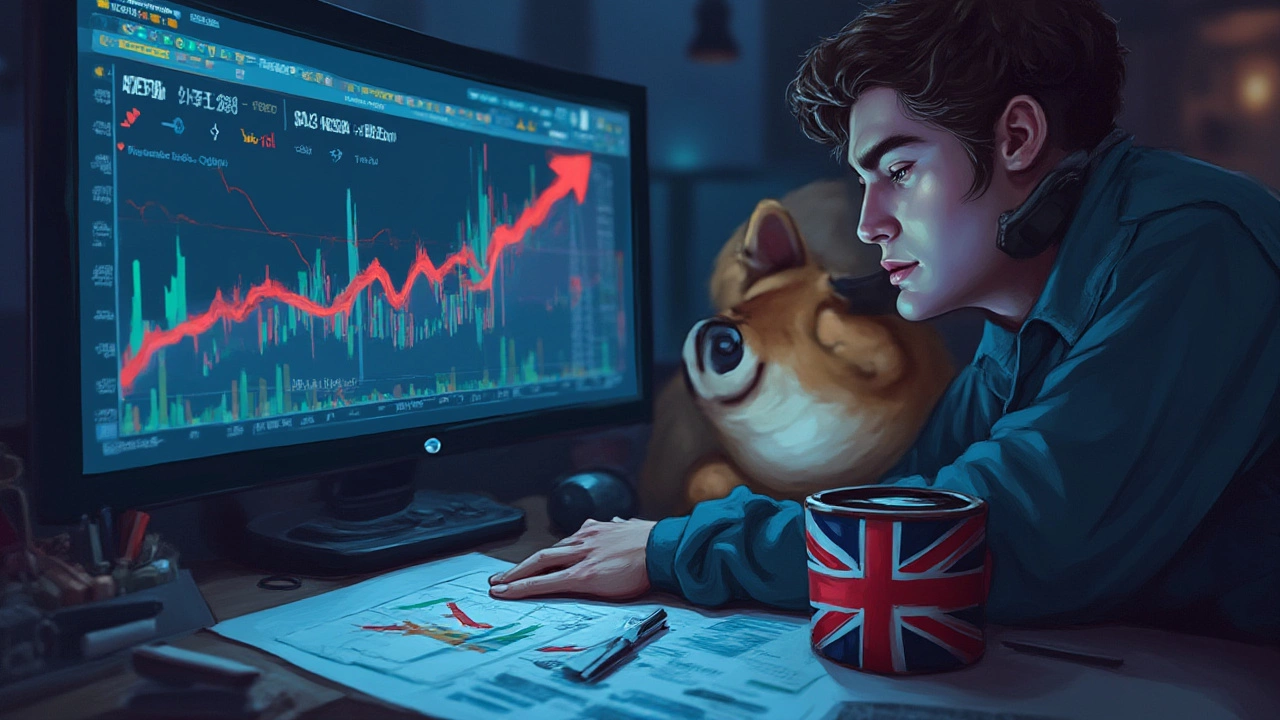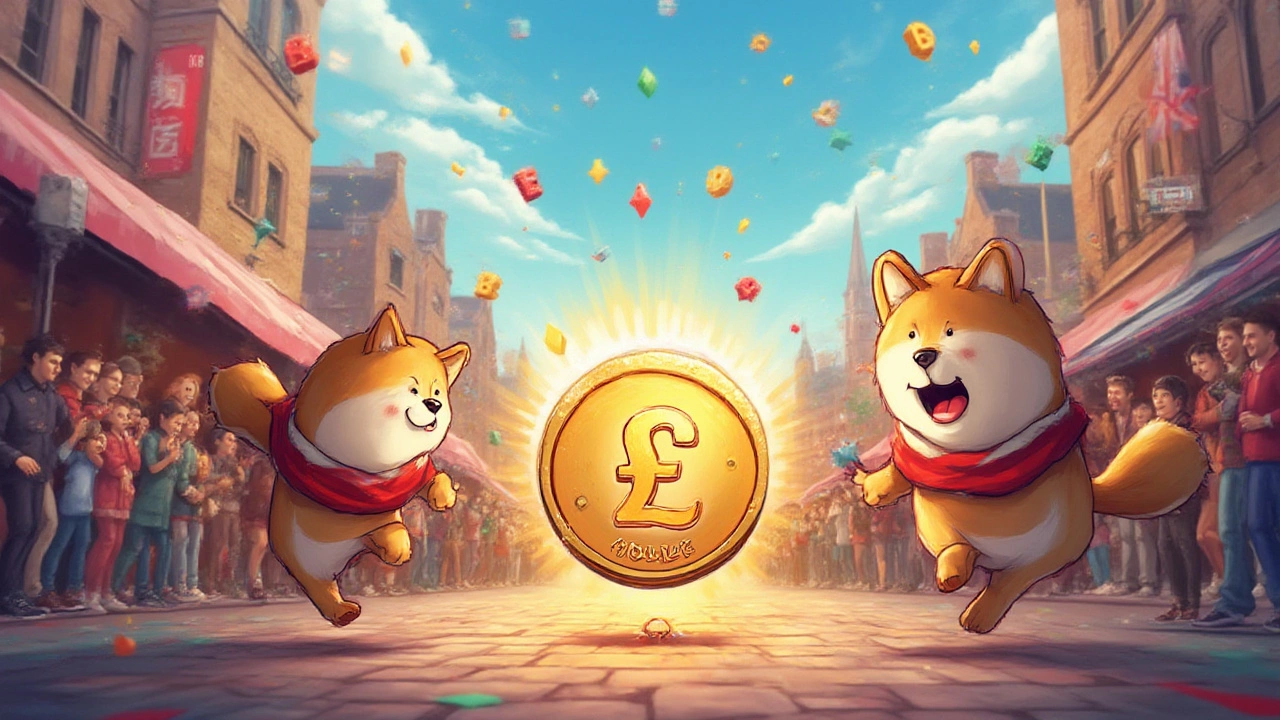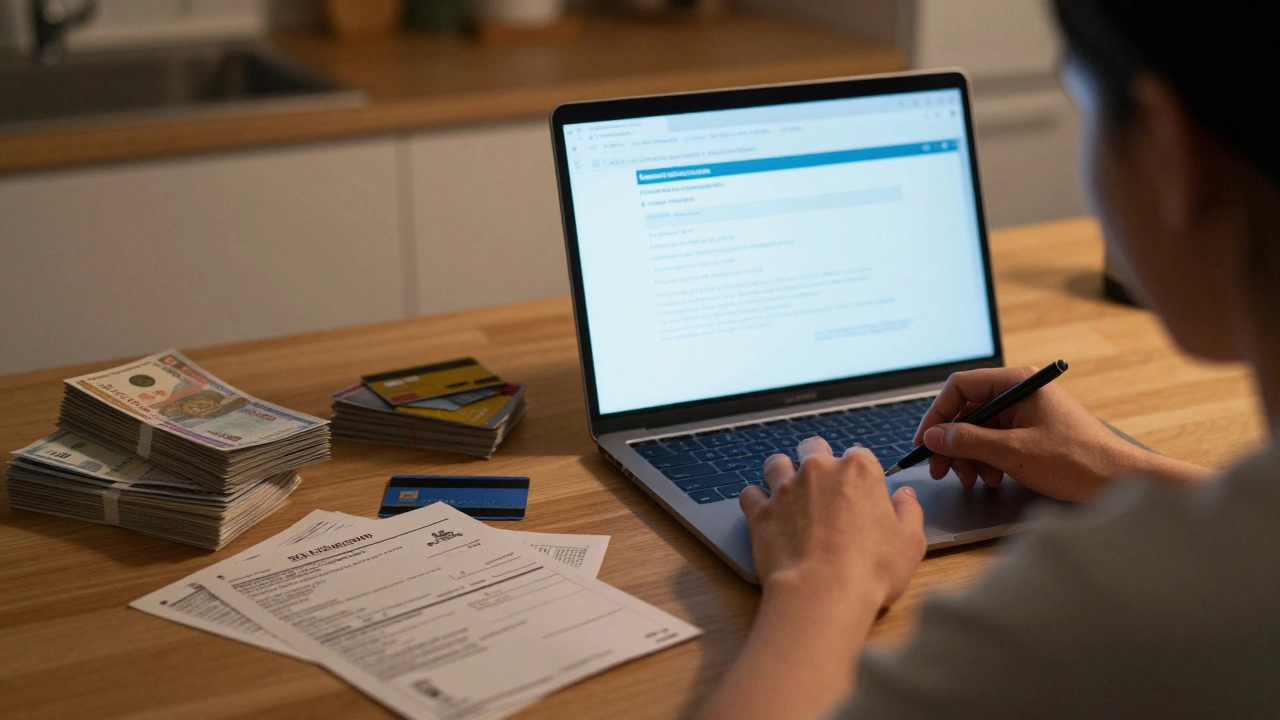If you’d tossed a few bucks at Dogecoin back when it barely existed, you’d be writing this instead of reading it. That $1 mark in crypto? For some tokens, it’s this holy grail. For others, it’s just another pit stop before rocketing even higher—or vanishing totally. You’ve seen it on Reddit and X: armchair experts calling SHIB or PEPE “the next big one to a dollar.” But what actually needs to happen for any of these coins to break the $1 barrier? Spoiler alert: It’s not just hype and memes—there’s math, market limits, and a fair bit of lunacy involved.
The Psychology and Economics Behind the $1 Crypto Hype
Let’s be real: most of us don’t expect Bitcoin or Ethereum to ever see $1 again—unless something catastrophic happens. Why, then, is there this recurring obsession with smaller coins reaching that $1 milestone? It’s all about psychological round numbers. A coin at $0.00001 climbing to $1 feels like a life-changing leap, even if you own just a slice of it. The lure? That incredibly low price lets you scoop up huge amounts for almost nothing, so the imagination runs wild with dreams of a quick flip. Even the smallest price moves mean huge returns (or losses).
This isn’t just wishful thinking—there’s research on this. Finance psychologists call it “unit bias”: investors prefer to own whole units of something cheap, even if the real-world value doesn’t change. When SHIB was trading for fractions of a cent, stories spread of buyers turning tiny investments into new cars, houses, you name it. But here’s the kicker: as more people pile in for the $1 fantasy, the harder it gets for that dream to come true. Every newly minted token, every hype train, draws more cash but also more risk. There’s only so much money floating around, and it’s not like everyone can win at once.
Let’s throw some numbers at the wall. Dogecoin hit nearly $0.74 in May 2021—close, but still didn’t break $1 despite super-celebrity backing (thanks, Elon). Shiba Inu dreams of $1 were everywhere, but even after a wild run and listings on major exchanges, it hasn’t hit a cent yet. Why? Market cap reality. For SHIB to hit $1, its total market capitalization (all coins times price) would need to reach more than $500 billion—dwarfing all but Bitcoin and Ethereum at their peaks. For PEPE or FLOKI, you’re looking at needing trillions, not millions.
The $1 milestone is less about technical breakthroughs, and more about cold, hard mathematics: token supply times price equals total value. If a project has a trillion tokens floating around, the path to $1 each leads to numbers that make even central banks laugh out loud. Smaller supply? Suddenly, $1 feels less like a meme and more like a possibility. But then you’ve got to convince investors, developers, and exchanges to care—no small job these days.

Which Coins Actually Have a Shot at ?
Let’s break away from meme hype for a minute. Which coins could, in theory, actually land at $1? Spoiler: We’re not just talking about viral tokens here. Start with supply and demand. If a coin already trades at $0.25 with a billion tokens, hitting $1 would take the supply times price to $1 billion—a number that’s high, but not out of the stratosphere for a fresh project with a great use case. That’s where you see some new faces entering the chat.
You’ve probably heard of VeChain (VET)—it’s been in the top 40 for years but never cracked $1. Its supply is just over 72 billion tokens. That means a $1 VET would have a $72 billion market cap, which would put it right below Ethereum’s current size. Feels like a stretch, but not impossible… if giant enterprises adopt blockchain for every supply chain on earth. Meanwhile, coins like Stellar (XLM) and Cardano (ADA) have shorter distance to travel—they actually hit or passed $1 before, only to crash back as the appetite cooled. ADA touched $3 in 2021 during the last wild bull run. Will it get back up there? If market confidence and features rebound, maybe—but it isn’t the moonshot some folks hope for.
Now, let’s not ignore the biggest meme tokens: SHIB, PEPE, and FLOKI. The numbers get silly fast. For SHIB to reach $1, you’d need more money than most countries’ economies. Could a huge burn or radical migration to a new chain change that? Maybe—but there’d need to be a massive shift in the token’s basic economics. PEPE and FLOKI, with their equally huge supplies, would need unimaginable market surges to come close. That’s not saying “never”—nothing in crypto is impossible, as we’ve all seen—but aiming for $1 on those tokens is less like investing and more like playing Powerball.
The crypto coins where $1 genuinely looks reachable? Look for lower supply, active development, and real use cases. Take Worldcoin (WLD), launched by Sam Altman of OpenAI, which debuted under $2 in 2023. Its supply is much tighter, and though it carries controversy over privacy and “world ID,” the path to $1 isn’t blocked by math. Other tokens worth watching are from serious projects tackling real-world problems—think Chainlink (LINK), Avalanche (AVAX), or even Solana (SOL) spin-offs, all with histories of surging above $1 due to demand, hype, and real adoption.
Want to see what $1 could mean for some of the biggest names? Here’s a quick table:
| Coin | Current Supply | Needed Market Cap at $1 | All-Time High (USD) |
|---|---|---|---|
| SHIB | 589 trillion | $589 trillion | ~$0.000088 |
| PEPE | 420.69 trillion | $420.69 trillion | ~$0.0000045 |
| VeChain | 72.7 billion | $72.7 billion | ~$0.28 |
| Worldcoin | 193 million | $193 million | ~$7.97 |
| Dogecoin | 145 billion | $145 billion | ~$0.74 |
| Cardano (ADA) | 35 billion | $35 billion | ~$3.09 |
So, the coins with massive supplies would need absolutely wild amounts of cash to ever sniff $1. If you’re looking to find the next “$1 coin,” zero in on young projects with real backing, a strong community, lower token supplies, and potential for real-world use. Jumping on hype alone is a quick way to get burned—don’t say Curtis didn’t warn you.

How to Spot the Next Coin—and Avoid the Pitfalls
You don’t need to be a Wall Street analyst to see when something’s off. When a coin with trillions in supply promises to “burn tokens until $1,” your antenna should go up. Token burns aren’t magic. Unless burning happens at a jaw-dropping pace and demand keeps growing, price impact is a drop in the ocean. Remember, even SHIB’s huge burn events only propped up prices temporarily. If a project spends more time hyping burns than building products or partnerships, be skeptical.
Let’s talk roadmaps. A token’s price moves when projects actually deliver: new features, real-world integration, fresh exchange listings. If a coin’s developers are silent, infighting, or gone, treat it like leftover sushi—for your health, stay away. Check on GitHub or project Discords for signs of life. Strong, vibrant communities and frequent updates are green flags in crypto.
Partnerships matter, too. When a coin like VET lands deals with companies like BMW or Walmart China, it’s worth keeping an eye on. By contrast, tokens constantly touting giveaways, random celebrities, or “next-level marketing” usually end up as exit scams or just evaporate. Do the names behind a token check out? Are CEOs or founders public, and do they stand by their project in tough times? If everything’s anonymous or shady, there’s your answer.
Another huge tip: check the distribution. Tokens heavily concentrated in a few wallets are risky; any giant holder can tank prices in seconds. Tools like Etherscan or Solscan let you check this in a couple of clicks. A fair, widely distributed coin is less likely to be manipulated—or suffer a sudden crash from a whale dumping millions.
Don’t trust price predictions that rely only on “ifs.” If token supply gets cut, if demand booms, if the app goes viral… that’s too many ifs. Instead, ask if the token has real utility. Is it needed for some platform, paid for by actual companies or people? Look at what happened with LINK, which works behind the scenes to power smart contracts across blockchains. Even if you don’t care about or understand the tech, watch what the big money does, not TikTok influencers.
What about the flip side? If a coin already climbed from $0.00004 to $0.0004 without anything new behind it, chances are you’re late to the party. Remember, this space moves fast. Be careful of announcements like “we’re working on a revolutionary project”—without clear demos or partnerships, that’s hot air.
Finally, never bet more than you can lose. No “guaranteed” $1 coin exists. For every lucky moonshot, there are dozens of tokens that disappear, get rug-pulled, or never get noticed at all.
Let’s wrap up with a punchy checklist for you to use before jumping in:
- Check supply—lower is usually better for $1 potential.
- Look for active development and recent updates.
- Watch for real partnerships or industry adoption.
- Examine token distribution—avoid ones dominated by a few whales.
- Avoid coins with only hype or celebrity shilling, not real innovation.
- Do your own math: can the supply x $1 make sense compared to other big players?
- Don’t bet the house—crypto is fun, but also ruthless.
The hunt for the next $1 crypto is part dream, part detective work, and yes, part lottery ticket. Ignore the noise, do your own research, and you might just spot the next legend—before the hype machine takes over.








